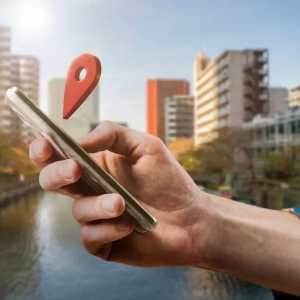CONTACT US
info@bidaiondo.com

Web localization: the key to success in the international market

Technological innovation has redefined the rules of the game in the international arena, eliminating many of the barriers that limited communication and commercial exchange. Today, digitalization offers companies unprecedented opportunities for growth and expansion, allowing them to bring their products and services closer to consumers around the world.
Even so, we must be aware that entering international markets requires a deep understanding of the cultural, linguistic and commercial differences of each of them. And, to achieve this, it is not enough to translate the content of your website, but it is essential to develop a comprehensive adaptation strategy that effectively addresses the characteristics of each new market.
Differences between localization and translation
When a company decides to internationalize, the first thing that comes to mind is the need to translate the content of its website into the language or languages spoken by its future clients. To that end, we have high-quality translation solutions capable of guaranteeing that our website, once translated, will maintain the same naturalness and fluidity that it would have if it had been created directly in the target language, avoiding any feeling of artifice.
Now, when it comes to offering our products or services to a foreign audience, translation is just the beginning. The fundamental element to connect with the audience lies in “localization”; that is, in adapting the web content to the cultural and linguistic context of the target market. And if when talking about translation, we understand that it consists of translating what is in one language into a different one, when we think about localization, it is easy for us to overlook details that are crucial to achieving success in the international arena.
Localization means adapting the content of our website to the target market. It is a process that requires deep knowledge, understanding and respect for the culture of the public we are addressing. Based on this knowledge, we will meticulously personalize all the elements of the website; from images and examples, which must be appropriate and not misleading, to technical adjustments such as date formats, local currency or units of measurement, where necessary.
It is essential to familiarize yourself with local laws and regulations related to privacy, accessibility, and web advertising regulations, because they can vary significantly between countries. Additionally, we will adjust the design and navigation structure of the site to meet the expectations and preferences of end users, which may include modifications to technical formats, such as conversion to local alphabets (e.g., Chinese characters or languages written from left to right like Arabic), and adapting to differences in Internet connectivity and preferences between mobile and desktop devices.
Why localize your website? Discover the main advantages
As we see, localization is a fundamental pillar in the strategy to attract new clients internationally and, within this process, local SEO optimization is a fundamental element. This practice consists of adapting the content of your website through the strategic selection of keywords that are relevant to the market you are targeting, in order to position your page among the first results in specific searches for each region or country. These keywords are chosen based on how local audiences search online for products or services similar to what you offer, with the goal of capturing the attention of an audience that may not yet be familiar with your brand.
The importance of location in acquiring new customers
When you adapt your website to the preferences and needs of the target audience, you attract their attention and encourage a much more active interaction. As a result, you will attract visitors who spend more time exploring your products or services, significantly increasing conversion and loyalty rates. Personalizing your website is essential to strengthen users' connection with your brand and create closer, longer-lasting relationships.
This strategy allows you to adapt your products or services to local consumption patterns, a decisive factor in persuading customers that you offer them exactly what they were needing. Through effective localization, you improve your brand image and achieve greater international recognition. In addition, you attract a broader audience and position yourself as a leader compared to competitors who have not known how to adapt the content of their website with the same precision as you.
GuidePractice: how to locate your website in 4 steps
Localizing your website may seem like an overwhelming task, but if we break it down into four basic points, it becomes an easily understandable process. Below, we offer you a guide with those four steps to carry it out:
Step 1: Identify languages and define your target audience
The more you know your target audience, the more successful you will be in connecting with them. To decide which languages you are going to translate your website into, you need to carry out market research to identify those places where your products or services will be most favorably received. This analysis should include everything from purchasing patterns to monitoring trends and preferences on social networks, as well as a detailed examination of your competitors' tactics. With this you will obtain a solid base of information about your potential future clients.
Also evaluate user interaction with your page using digital behavior analysis tools such as: Google Analytics, Search Console, Adobe Analytics and Hotjar. This monitoring will allow you to confirm if your offer responds to what your international audience is looking for and needs, thus enhancing the success of your localization strategy.
Step 2: Develop and adapt content to appeal to international audiences
Once your target markets have been identified, the next step is to adapt the content of your website to connect with your future customers. As we have seen, beyond adjusting the language, it is essential to know and understand the reality of the recipients in order to generate messages that effectively capture their interest.
It is about creating original content that reflects local values, interests and preferences, taking care that each element, from texts to images and metaphors, is respectfully integrated with the cultural and social environment of your audience. This process seeks the balance between your brand identity and the cultural uniqueness of each new market, fostering an emotional connection with the public. This is a personalization approach that enhances the user experience while building brand trust and loyalty; two fundamental elements to achieve international success.
Step 3: Maximize global reach through multilingual SEO
Now that we know the importance of properly selecting keywords to develop a perfect multilingual SEO strategy, it is time to expand the optimization of our website beyond textual content. It is essential to integrate keywords into technical elements that, although not visible, are decisive for search engines.
The three fundamental pillars of multilingual SEO are:
Translation on the server, which is carried out directly in the source code of the web page. This ensures that the translation is available before the content reaches the user's browser, making it easier for search engines to index the site in multiple languages.
HReflang tags are essential to indicate to search engines the relationship between versions of the web page in different languages, improving the precision in language-specific search results.
Unique URLs per language, which use subdirectories or subdomains and allow the site to be structured according to the language and improve both the organization of the content and its relevance and accessibility in search results.
The correct implementation of these technical elements increases the ability of search engines to interpret and evaluate our website, which translates into better positioning in local results.
Step 4: analysis of results. Measure the effectiveness of your multilingual approach
Finally, it is essential that you evaluate the success of your multilingual strategy. Start by measuring variations in traffic from different regions. See if there has been an increase in user interaction and purchases and if your site has risen in search results by language. Use web analysis tools to monitor the conversion rate and the level of interaction in each of the language versions of your site, so that you can identify areas of improvement to modify your localization strategy if necessary. Compare data before and after implementing your multilingual strategy so you have an accurate view of its effectiveness. With this information, you can make ongoing adjustments that optimize your localization strategy and improve communication with your international audience.
Choose the best tools for multilingual content marketing
You can develop the best localization strategies, but if you do not have the appropriate technological support, you will hardly achieve the results.expected. Let me tell you about the basic types of tools for multilingual marketing content.
Content Management Systems (CMS):
The main function of CMS is to facilitate the management and publication of multilingual content. These systems ensure that each language version of your website is understandable and accessible to your foreign visitors. Leading platforms such as WordPress, Webflow or Squarespace offer tools that simplify the adaptation of content to the linguistic and cultural needs of international audiences. This promotes effective communication in each user's language, significantly improving interaction and understanding.
Translation tools:
They are essential to bring the content of your website to an international audience. Although tools like Google Translate can process large volumes of text in a very short time, they lack the cultural context necessary for effective localization. On the other hand, solutions like Weglot not only offer fast and accurate translations of web content, but also integrate advanced functionalities that adapt the content to the specific cultural and linguistic context of each market. On the other hand, these solutions optimize technical aspects such as SEO, which improves both site accessibility and user experience, while contributing to customer satisfaction and loyalty.
Multilingual SEO Tools:
We know the importance of SEO for the international visibility of any company. Well, tools like Semrush or Ahrefs are those that help you identify and adapt the relevant keywords in each language so that you adapt your localization strategy to global markets. They also provide accurate traffic data by language, making it easy to optimize and analyze the impact of your content internationally, along with other advanced features.
Weglot: a strategic ally for multilingual localization
In the interconnected reality in which we are immersed, where personalization and cultural adaptation are key to business success, Weglot is the multilingual solution that stands out above all others. The platform offers you three translation modalities: automatic, translation services through qualified professionals, and a mixed option that combines both. All of them are modalities designed to adapt your website with the greatest precision to the linguistic and cultural demands of each market.
Weglot's advanced technology enables complete and effective localization of your website, ensuring that every component, from text to images and technical configurations, perfectly matches the expectations of the target audience. This meticulous adaptation significantly improves the user experience, facilitates a more authentic connection, increases interaction and strengthens the presence of your brand in the international arena, because Weglot, in addition to a location tool, is also a strategic ally along the way. towards global success.
https://www.marketingdirecto.com/digital-general/digital/localizacion-web-clave-exito-mercado-internacional
Last news
Instagram y Threads se actualizan para Halloween.

TikTok presenta Smart Split y AI Outline, sus dos nuevas herramientas de IA para edición de vídeos cortos.

online trading systems.
 We show you the best way to market products and services online, through a professional service of installation, management and maintenance of your virtual store
We show you the best way to market products and services online, through a professional service of installation, management and maintenance of your virtual store
We program to suit you
 We help you achieve operational excellence in all your business processes, whether they are production, logistics, service or office processes. In addition, we assure you to maintain continuous improvement in your management.
We help you achieve operational excellence in all your business processes, whether they are production, logistics, service or office processes. In addition, we assure you to maintain continuous improvement in your management.
Bidaiondo Articles
The impact of AI on SEO: redefining digital visibility for marketing professionals.

In addition to helping us create stunning texts, videos, and all kinds of images with a single prompt, AI is shaping a new reality that is redefining the search engine optimization landscape. For digital marketing professionals, this represents both a challenge and a golden opportunity to evolve their strategies. As we've discussed in recent months, AI has transformed how search engines, like Google, understand, index, and rank content, forci...
Career path: the digital skills you need to work in marketing.

Digital marketing is experiencing one of its best moments in Spain. With thousands of companies competing for consumers' attention, the sector has become fertile ground for those seeking a promising career. If you dream of designing campaigns, analyzing data, and watching your strategies take off, you need more than just enthusiasm: training, specialization, and specific digital skills. The digital environment changes so rapidly that simply m...

ABOUT US
FILES

Welcome to Bidaiondo, dear user
BIDAIONDO SL, as the party responsible for the website www.bidaiondo.com, uses its own operating cookies and those of third parties of an analytical nature to allow the use of the website, analyze our services and show you information related to your preferences based on a profile drawn up from of your browsing habits (for example: pages visited). Please bear in mind that, if you do not activate some types of cookies, such as operational and analytical cookies, your experience of using this website may be affected. You can obtain more information and configure your preferences in the CONFIGURE option that appears below, you can reject cookies in the REJECT AND CLOSE option or accept all cookies and continue browsing in the ACCEPT AND CLOSE option.
So do you want to know more?
Data privacy seems important to you, and it is to us too. We store cookie data for 13 months. If you want to know more, you can visit our pages Privacy Policy y Cookies policy. Do you know what cookies are? Cookies are files that are used by virtually all websites. When browsing our page, they are installed in your browser or device to ensure that the website works correctly and store information about your visit. The data provided by cookies treat the user anonymously and in no case do they store personal information.
The data collected by the cookies we use are:
- Addresses IP
- References of visited pages
- References of downloaded files
- The website itself www.bidaiondo.com
- https://www.moz.com
- https://secure/europeanssl.eu

 Spanish
Spanish













